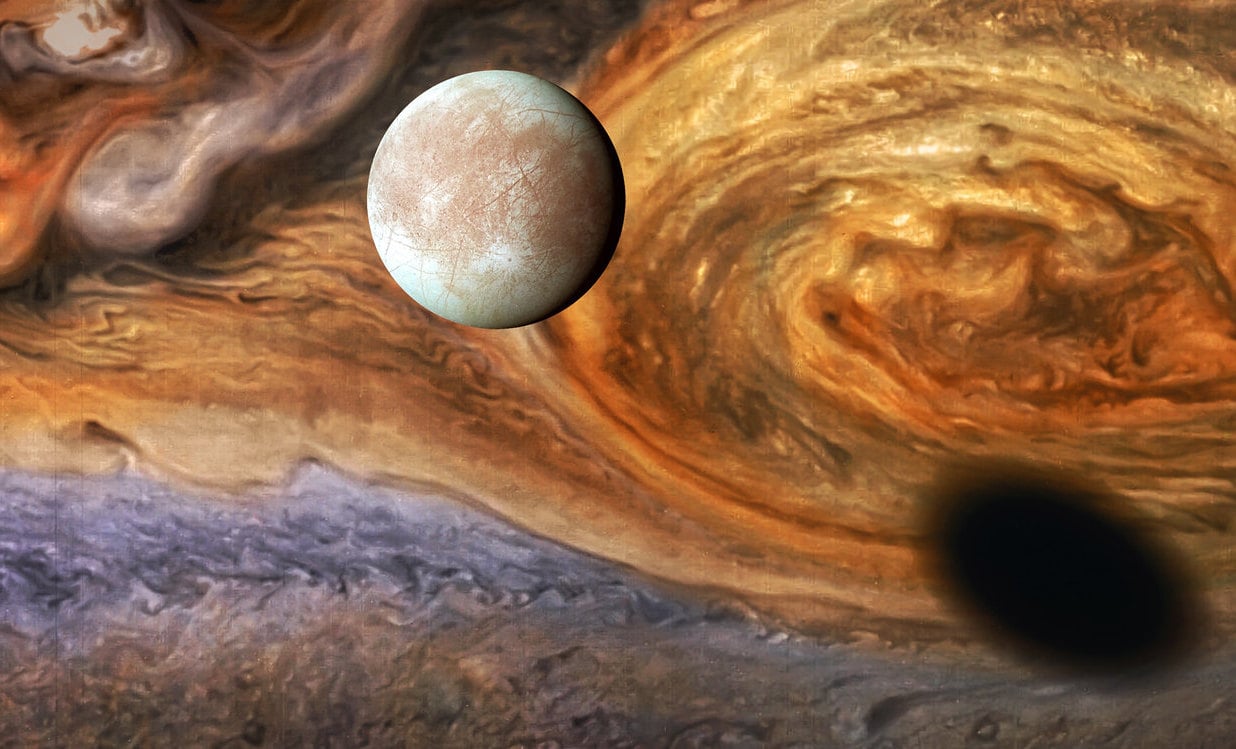 The Jupiter Icy Moons Explorer spacecraft will launch on April 13, 2023. Its mission is to search for alien life on Jupiter’s icy moons. Credit: Jason Major / Flickr / CC BY-NC-SA 2.0
The Jupiter Icy Moons Explorer spacecraft will launch on April 13, 2023. Its mission is to search for alien life on Jupiter’s icy moons. Credit: Jason Major / Flickr / CC BY-NC-SA 2.0On April 13, 2023, scientists will launch a spacecraft called Jupiter Icy Moons Explorer (Juice) into space.
The mission of this spacecraft is to explore distant Jupiter and its icy moons in the hopes of finding signs of life beyond our planet. The cost of this mission is approximately $1.73 billion, and it will last for eight years.
Juice is unique because it will not explore planets close to Earth, like Mars. Instead, it will fly deep into space to search for water on distant worlds orbiting Jupiter and Saturn. Scientists believe that these worlds have the greatest reserves of water in our solar system, making them promising candidates for finding alien life.
Olivier Witasse, the project scientist for this mission, explained that they hope to find a place with internal energy and liquid water around Jupiter. They believe that the icy moons of Jupiter have more water than Earth, which is why they are a prime target for this mission.
Jupiter’s moons covered in ice
Probes showed that Jupiter’s moons Ganymede, Callisto, and Europa, are covered in ice, hiding vast oceans of water. And in 2005, researchers discovered that Saturn’s moon Enceladus is spewing water and organic material from an underground ocean.
US astronomer Neil deGrasse Tyson says, “If ever there was a next-best place to look for life, it’s here,” referring to these icy moons. But getting there is tough. It takes eight months to get to Mars, while the Juice mission, launching from French Guiana, will take eight years to reach Jupiter, with flybys of Earth and Venus to keep it moving.
#ESAJuice will carry 10 instruments, comprising the most powerful payload complement ever flown to the outer Solar System 🦾
✅A remote sensing package
✅A geophysical package
✅An in situ package
+ an experiment.
Here's what they will explore 🧵👇 pic.twitter.com/6vYXAvlaY1
— ESA's Juice mission (@ESA_JUICE) April 4, 2023
Juice to orbit Jupiter by 2031
In July of 2031, Juice will go into orbit around Jupiter. However, before that happens, another probe named Nasa’s Europa Clipper will surpass Juice. Europa Clipper will take a shorter route, flying by Earth and Mars to reach Jupiter’s moon, Europa, by April of 2030.
As its name implies, Europa Clipper will concentrate on studying Europa. It is planned to make close approaches to the moon on 50 occasions, flying only a few hundred miles above its surface. This will allow scientists to search for areas that could potentially support life.
One of the reasons Europa Clipper is so intriguing is because of the likelihood of an ocean beneath the moon’s surface. This ocean is thought to be in contact with a rocky seafloor. If this is true, then scientists expect to find hydrothermal vents similar to those found in Earth’s oceans.
These vents are known to support a variety of thriving ecosystems, so it’s possible that Europa could host similar life forms. “Hydrothermal vents support thriving ecosystems on Earth, so they might be doing the same on Europa,” said Marshall Styczinski, a Europa Clipper scientist.

 1 year ago
68
1 year ago
68











 English (US)
English (US)